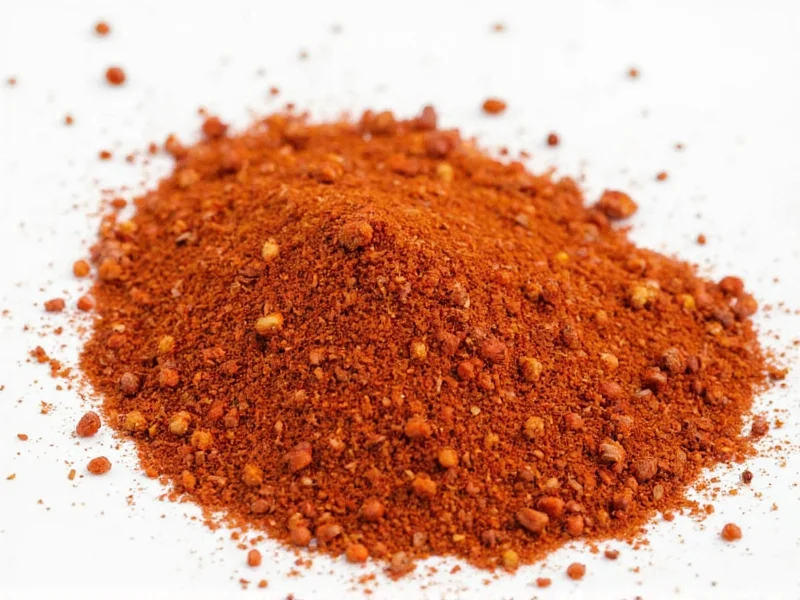When you're standing in the spice aisle wondering whether to reach for chilli flakes or red pepper flakes, you're not alone. This common kitchen confusion stems from regional terminology rather than actual product differences. Understanding these naming conventions can prevent recipe mishaps and help you make informed choices for your culinary creations.
Terminology: Regional Naming Conventions
The primary difference between chilli flakes and red pepper flakes is simply where you are in the world. In British English and many Commonwealth countries, the term chilli flakes predominates. In American English, the same product is almost always labeled red pepper flakes. This linguistic variation causes unnecessary confusion for home cooks and professional chefs alike.
Food manufacturers sometimes capitalize on this regional distinction by using different names for the same product when distributing internationally. When examining ingredient lists, you'll typically find both products contain Capsicum annuum varieties like cayenne, Fresno, or crushed red peppers.
Composition and Ingredients
Authentic chilli/red pepper flakes consist of nothing more than dried, crushed chili peppers. However, some commercial products may include:
- Additional spices like oregano or garlic powder
- Salt or anti-caking agents
- Different chili varieties blended together
When comparing products labeled differently, always check the ingredient list. Pure versions should contain only "crushed red peppers" or "dried chili peppers" without additives. This is particularly important for those with dietary restrictions or seeking authentic flavors for specific cuisines.
| Characteristic | Chilli Flakes | Red Pepper Flakes |
|---|---|---|
| Primary Ingredients | Dried chili peppers (typically cayenne) | Dried chili peppers (typically cayenne) |
| Heat Level (Scoville) | 30,000-50,000 | 30,000-50,000 |
| Common Regional Use | UK, Australia, New Zealand | United States, Canada |
| Flavor Profile | Earthy, slightly smoky, moderate heat | Earthy, slightly smoky, moderate heat |
| Best Culinary Uses | Pizza, pasta, marinades, sauces | Pizza, pasta, marinades, sauces |
Flavor and Heat Profile Comparison
Both chilli flakes and red pepper flakes deliver a similar heat experience, typically ranging from 30,000 to 50,000 Scoville Heat Units—comparable to cayenne pepper but milder than habaneros. The heat builds gradually rather than hitting immediately like fresh chilies.
Flavor-wise, quality flakes offer more than just heat. They contribute complex notes including:
- Earthy undertones from the dried pepper skins
- Slight fruitiness depending on the chili variety used
- Subtle smokiness, especially in artisanal products
The particle size can affect both heat distribution and flavor release. Finer grinds deliver quicker, more intense heat, while coarser flakes provide a more gradual warming effect with visible flecks in dishes.
Culinary Applications and Substitution Guide
Understanding chilli flakes vs red pepper flakes substitution is straightforward since they're essentially identical. When a recipe calls for one and you have the other, use them in a 1:1 ratio without adjustment.
For optimal results in various dishes:
- Pizza and pasta dishes: Sprinkle directly on finished dishes for vibrant color and controlled heat
- Marinades and sauces: Add early in cooking to allow flavors to meld
- Infused oils: Steep flakes in olive oil for 2-3 weeks for versatile spicy oil
- Baking: Incorporate into breads or crackers for subtle heat
When substituting for fresh chilies, remember that dried flakes are more concentrated. As a general rule, 1/4 teaspoon of flakes equals approximately one medium fresh chili. For those sensitive to heat, start with half the recommended amount and adjust to taste.
Shopping and Storage Recommendations
When selecting between chilli flakes and red pepper flakes, look for products with:
- Bright red color (dull appearance indicates age)
- Visible flecks of pepper skin and seeds
- No additional ingredients beyond chili peppers
- Opaque packaging to protect from light degradation
Proper storage maintains freshness and potency. Keep your flakes in an airtight container away from heat and light. When stored correctly, they'll retain optimal flavor for 1-2 years. To test freshness, rub a small amount between your fingers—fresh flakes should release a noticeable aroma and leave a slight oily residue.
Specialty Variations Worth Exploring
While standard chilli/red pepper flakes serve most purposes well, specialty variations can elevate specific dishes:
- Calabrian chilli flakes: From southern Italy, offering fruity notes with moderate heat
- Urfa biber: Turkish flakes with deep, smoky flavor and moderate heat
- Maras pepper flakes: Turkish variety with complex flavor and mild heat
- Ghost pepper flakes: For extreme heat enthusiasts (1,000,000+ Scoville units)
These specialty options demonstrate how regional chili varieties create distinct flavor profiles beyond the standard red pepper flakes found in most supermarkets. Exploring these can add authentic regional character to specific cuisines.
Common Misconceptions Clarified
Several myths persist about chilli flakes versus red pepper flakes:
- Misconception: Red pepper flakes contain bell peppers Reality: Despite the name, they're made from hot chili varieties, not sweet bell peppers
- Misconception: One is significantly hotter than the other Reality: Heat levels depend on the specific chili variety used, not the name on the label
- Misconception: They're interchangeable with chili powder Reality: Chili powder often contains additional spices and is more finely ground
Understanding these distinctions helps prevent recipe failures and ensures you're using the right ingredient for your culinary goals.











 浙公网安备
33010002000092号
浙公网安备
33010002000092号 浙B2-20120091-4
浙B2-20120091-4